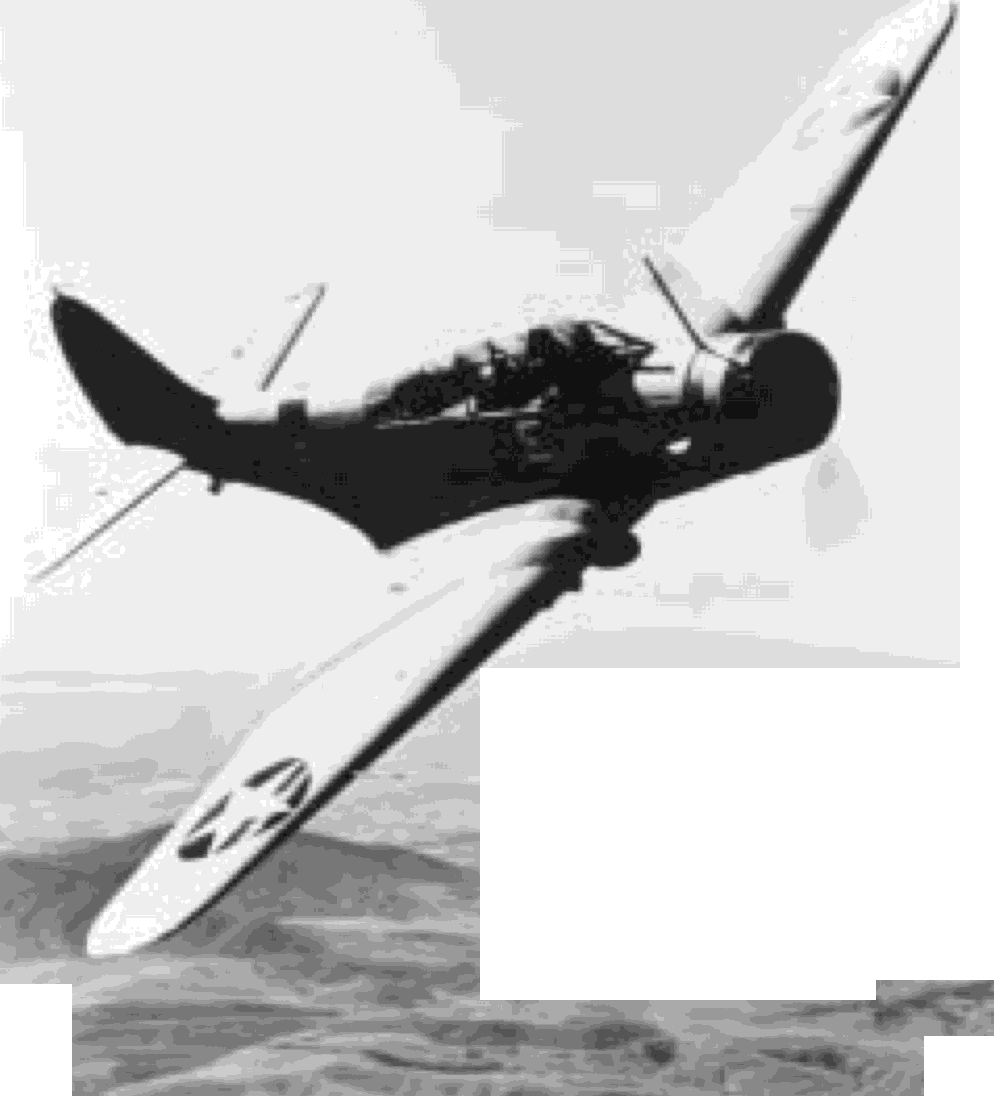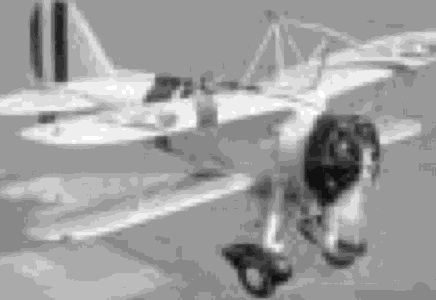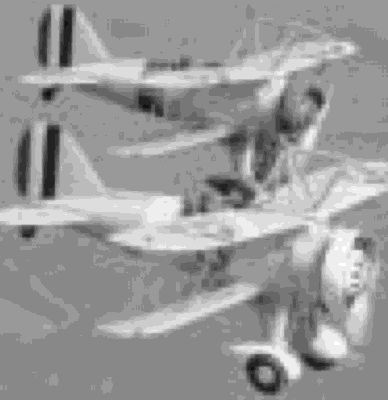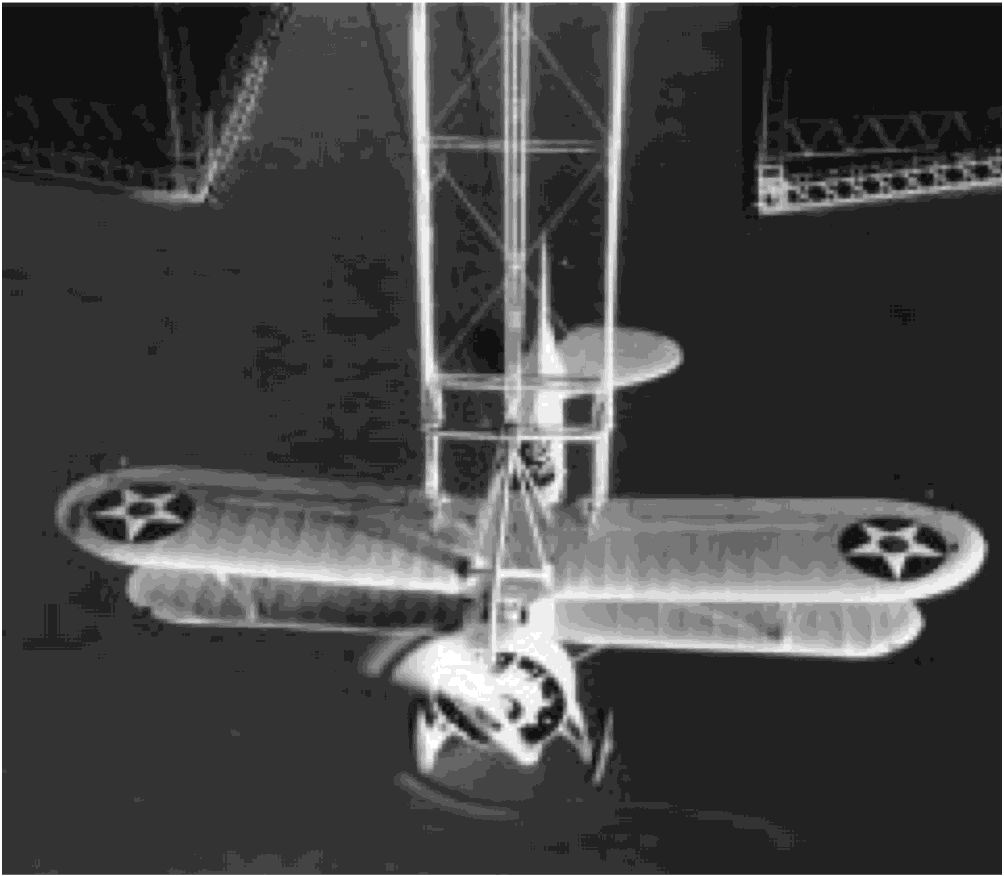



1934-Contin ued
operations, the ship went full speed astern and aircraft
landed using the bow arresting gear.
30 June
A contract was issued to Douglas for the
XTBD-l torpedo bomber. This aircraft was the proto-
type for the TBD Devastator which remained in opera-
tional use through June 1942.
- -
8t' _ ___ -
-
Devastator tOlpedo plane 1061904
18 July
Fourteen Naval Academy graduates, Class
1933, reported at Pensacola, Fla., for special training
toward qualification as Naval Aviators. Their designa-
tion in January 1935 climaxed a series of events over
the somewhat devious route of an honorable dis-
charge upon graduation in 1933; because of lack of
vacancies in the Navy, enrollment and training as
Flying Cadets in the Army Air Corps; acceptance of the
Navy offer of a commission in either the Navy or
Marine Corps; and finally, completion of the special
course at Pensacola.
19 July
Lieutenant Harold B. Miller and Lieutenant Ug)
Frederick N. Kivette, flying F9C-2s without their wheel
landing gear, dropped from the trapeze of
Macon
(ZRS-
5) to scout for
Houston
(CA 30) returning from a cruise
in the Pacific with President Franklin D. Roosevelt on
board. Because of the improved performance of the air-
UNITED STATES NAVAL AVIATION
1910-1995
87
II
Curtiss F9c-2s with airship hoop-on gear 441982
F9c-1 being hoisted into hangar of Akron 441980
craft on this first flight without landing gear, it became
standard operating procedure to fly
Macon
(ZRS 5)
planes from the trapeze in this configuration.
1 August
Lieutenant Ug) Charles H. Kendall and
Lieutenant Ug) Howard T. Orville, in a 206.4-mile flight
from Birmingham, Ala., to Commerce, Ga., won the
National Elimination Balloon Race and qualified for
the international race.
1 November
The Naval Aircraft Factory was autho-
rized to manufacture and test a flush-deck hydraulic
catapult, Type H Mark 1. This catapult was designed to
launch landplanes from aircraft carriers and was the
Navy's initial development of a hydraulic catapult, a
type which was to prove capable of extensive refine-
ment and which eventually was to be accepted as a
primary means of launching landplanes from carriers.
 |
11 |
 |